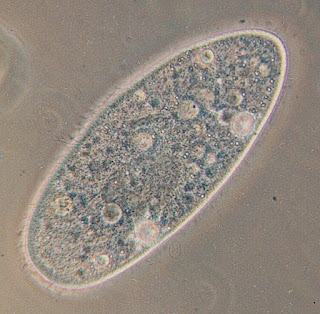 | |||
| The Age of Napoleon, by Will and Ariel Durant, Volume 11 of The Story of Civilization. |
Two men especially brought scientific honors to Germany in this age—Karl Friedrich Gauss (1777–1855) and Alexander von Humboldt (1769–1859).Humboldt is never mentioned in Intermediate Physics for Medicine and Biology, but Gauss is everywhere. When speaking of Gauss, the Durants write
We shall not pretend to understand, much less to expound, the discoveries—in number theory, imaginary numbers, quadratic residues, the method of least squares, the infinitesimal calculus—by which Gauss transformed mathematics from what it had been in Newton’s time into an almost new science, which became a tool of the scientific miracles of our time. His observations of the orbit of Ceres (the first planetoid, discovered on January 1, 1801) led him to formulate a new and expeditious method of determining planetary orbits [least squares is discussed in Chapter 11 of IPMB]. He made researches which placed the theory of magnetism and electricity upon a mathematical basis [Gauss’s law for calculating the electric field is discussed in Chapter 6 of IPMB; the now somewhat obsolete unit of magnetic field strength is the gauss]. He was a burden and blessing [definitely a blessing] to all scientists, who believe that nothing is science until it can be stated in mathematical terms. [He also invented the Gaussian probability distribution, which plays a major role in diffusion, discussed in Chapter 4 of IPMB]…. He is now ranked with Archimedes and Newton.Humboldt was more of a naturalist, and his name never appears in IPMB. But the Durants devoted even more space in their history to him than to Gauss.
The other hero of German Science in this age was Wilhelm von Humboldt’s younger brother Alexander…. In 1796 he began, by accident, the long tour of scientific discovery (rivaling Darwin’s on the Beagle) whose results made him, according to a contemporary quip, “the most famous man in Europe, next to Napoleon.”Humboldt is particularly famous for his work in geography and geology. I become familiar with him when I taught earth science. I was a new, untenured faculty member at Oakland University when the physics department needed someone to teach our earth science class. OU does not have a geology department, but some students do need a course in earth science, so the physics department was in charge of it. When the faculty member who traditionally taught it retired, I was asked to take it over. I knew nothing about earth science, but neither did anyone else in the department, and being the newest member of the department I didn’t feel that I could say no. I taught the class for about five years, and found that I enjoyed it. Most students in the course were elementary education majors. They weren’t the strongest science students I ever taught, but they were some of the nicest.
Here is what the Durants had to say about Humboldt.
He discovered (1804) that the earth’s magnetic force decreases in intensity from the poles to the equator. He enriched geology with his studies of the igneous origin of certain rocks, the formation of mountains, the geographical distribution of volcanoes. He provided the earliest clues to the laws governing atmospheric disturbances, and thereby shed light on the origin and direction of tropical storms. He made classic studies of air and ocean currents…. His Essai sur la geographie des plantes began the science of biogeography—the study of plant distribution as affected by the physical conditions of the terrain. These and a hundred other contributions, modest in appearance but of wide and lasting influence, were published in thirty volumes from 1805 to 1834 as Voyages de Humboldt et Bonpland aux regions equinoxiales du nouveau continent.
Humboldt is particularly relevant these days as one of the first environmentalists and discoverer of the concept of human-induced climate change. The closest he came to IPMB may be his work on muscle excitation and bioelectricity. In “Alexander von Humboldt and the Concept of Animal Electricity” (Trends in Neurosciences, Volume 20, Pages 239–242, 1997), Helmut Kettenmann wrote
More than two hundred years ago, Alexander von Humboldt helped to establish Galvani's view that muscle and nerve tissue are electrically excitable. His 1797 publication was a landmark for establishing the concept of animal electricity. Almost half a century later, von Humboldt became the mentor of the young du Bois-Reymond. With the help of von Humboldt's promotion, du Bois-Reymond demonstrated convincingly that animal tissue has the intrinsic capacity to generate electrical activity, and thus laid the ground for modern electrophysiology.
Gauss and Humboldt; what a pair. Put them together with Goethe and Beethoven and Germany around 1800 becomes a pretty interesting place.
Oh, what will I do with myself now that my reading of The Story of Civilization is complete? I guess I will have to focus on the 6th edition of IPMB.
My favorite Gauss story, about how as a child he added all the numbers from 1 to 100.
https://www.youtube.com/watch?v=cD9rI4wSc7o
Ken Jennings narrates this video about Alexander von Humboldt.
https://www.youtube.com/watch?v=fj7tRMdmOgs
Alexander von Humboldt and the discovery of climate change.
















